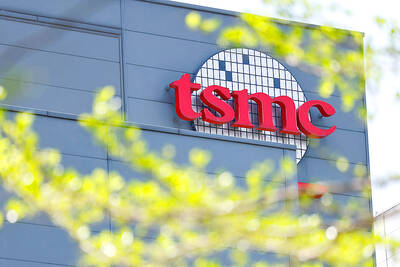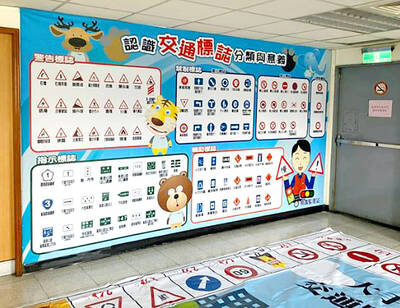The soaring price of rice has triggered a supply and demand crunch that is hurting some of Asia's neediest nations, forcing them to spend more on imports, industry experts and officials say.
For the likes of Thailand and Vietnam, the world's two biggest exporters of the grain, the rising demand is a money-spinner with rice now selling at more than US$500 a tonne in Bangkok and nearly as much in Hanoi.
But from Bangladesh to the Philippines, from India to Indonesia, the squeeze is bad news as they seek to balance cost with the imperatives of feeding hungry populations and averting social chaos.

PHOTO: AP
"Every Asian government is well aware of the close relationship between political stability and the stability of the rice price," said Jonathan Pincus, the UN Development Programme's chief economist in Vietnam.
"So every government in the region will be doing all it can to maintain price stability, particularly for basic food grains," he said.
At the end of last month, Thailand's benchmark rice was trading at more than US$500 a tonne, a rise of more than US$100 from a month earlier and up from just US$325 a year ago.
Exporters in Vietnam meanwhile were setting prices at US$460 a tonne last month, the state news agency VNA said -- up more than 50 percent from a year ago.
"It's a global issue. All cereal prices are going up," said Andrew Speedy, the UN Food and Agriculture Organization's Vietnam representative. "This is quite serious. It's hurting everybody, especially the poor."
In the first two months of this year, Vietnam's rice exports brought in US$150 million , an increase of 78 percent from a year ago.
Much of the output is destined for the Philippines, whose President Gloria Arroyo asked Vietnamese Prime Minister Nguyen Tan Dung last month to guarantee stable supplies.
Unable to meet its own needs, the Philippines will import up to 2 million tonnes of rice this year, the government said.
Last year its harvest was 6.44 million tonnes, National Food Authority spokesman Emmanuel Salonga said, but it needs 11.8 million a year.
"Our population is growing and arable land is being converted to other uses so we cannot cope with demand," he said.
Indonesia's rice production has been outpaced by its population growth for more than a decade, said Mangara Tambunan from the country's Center for Economics and Social Studies.
"The government has to open the door to more imports. It should not be so reticent," he said.
Last year, Indonesia imported 1.5 million tonnes.
To ensure stability, a government agency buys and releases stocks and sets import duties. Heavily subsidized rice is also sold to millions of the poorest families, yet even those prices are rising.
"They're trying to get producers to sign long-term contracts," Pincus said, referring to Indonesia and the Philippines.
In Bangladesh, which has a population of 144 million, the price of rice has doubled in a year, vastly outpacing income levels, said Ruhul Amin, deputy head of the government's food planning unit.
"People are cutting all their other spending to focus only on food," Amin said.
But with 40 percent of the population relying on US$1 a day or less, the poorest are struggling to survive.
"They have to survive on a pittance, and the rises are causing a general feeling of gloom and depression," he said.
This year Bangladesh will need to import some 3 million tonnes due to damage caused by floods in the middle of last year and November's devastating cyclone.
Some of that is coming from neighboring India, but otherwise New Delhi has halted exports of non-basmati rice to keep its own domestic prices in check.
India allowed the export of 3.2 million tonnes of non-basmati rice in the first half of the current financial year, but since October no new contracts have been signed.
The move has upset the All India Rice Exporters' Association.
"Farmers react to high prices by producing more," said its president, Vijay Sethia. "Restricting trade just distorts the price signal."
For now, some nations appear insulated against rising prices. China, Japan and South Korea are largely self-sufficient and protect their rice sectors via steep import tariffs or heavy subsidies.
In Japan, the price of high-quality rice is even waning with falling demand as younger Japanese turn to bread and Western-style dishes.
As for China, its severe cold snap earlier this year is unlikely to impact production much as it was not the planting season.
The freeze may drive up prices, said Feng Lichen, a trader at the Dalian Commodity Exchange.

EUROPEAN TARGETS: The planned Munich center would support TSMC’s European customers to design high-performance, energy-efficient chips, an executive said Taiwan Semiconductor Manufacturing Co (TSMC, 台積電), the world’s largest contract chipmaker, yesterday said that it plans to launch a new research-and-development (R&D) center in Munich, Germany, next quarter to assist customers with chip design. TSMC Europe president Paul de Bot made the announcement during a technology symposium in Amsterdam on Tuesday, the chipmaker said. The new Munich center would be the firm’s first chip designing center in Europe, it said. The chipmaker has set up a major R&D center at its base of operations in Hsinchu and plans to create a new one in the US to provide services for major US customers,

The Ministry of Transportation and Communications yesterday said that it would redesign the written portion of the driver’s license exam to make it more rigorous. “We hope that the exam can assess drivers’ understanding of traffic rules, particularly those who take the driver’s license test for the first time. In the past, drivers only needed to cram a book of test questions to pass the written exam,” Minister of Transportation and Communications Chen Shih-kai (陳世凱) told a news conference at the Taoyuan Motor Vehicle Office. “In the future, they would not be able to pass the test unless they study traffic regulations

GAINING STEAM: The scheme initially failed to gather much attention, with only 188 cards issued in its first year, but gained popularity amid the COVID-19 pandemic Applications for the Employment Gold Card have increased in the past few years, with the card having been issued to a total of 13,191 people from 101 countries since its introduction in 2018, the National Development Council (NDC) said yesterday. Those who have received the card have included celebrities, such as former NBA star Dwight Howard and Australian-South Korean cheerleader Dahye Lee, the NDC said. The four-in-one Employment Gold Card combines a work permit, resident visa, Alien Resident Certificate (ARC) and re-entry permit. It was first introduced in February 2018 through the Act Governing Recruitment and Employment of Foreign Professionals (外國專業人才延攬及雇用法),

‘A SURVIVAL QUESTION’: US officials have been urging the opposition KMT and TPP not to block defense spending, especially the special defense budget, an official said The US plans to ramp up weapons sales to Taiwan to a level exceeding US President Donald Trump’s first term as part of an effort to deter China as it intensifies military pressure on the nation, two US officials said on condition of anonymity. If US arms sales do accelerate, it could ease worries about the extent of Trump’s commitment to Taiwan. It would also add new friction to the tense US-China relationship. The officials said they expect US approvals for weapons sales to Taiwan over the next four years to surpass those in Trump’s first term, with one of them saying